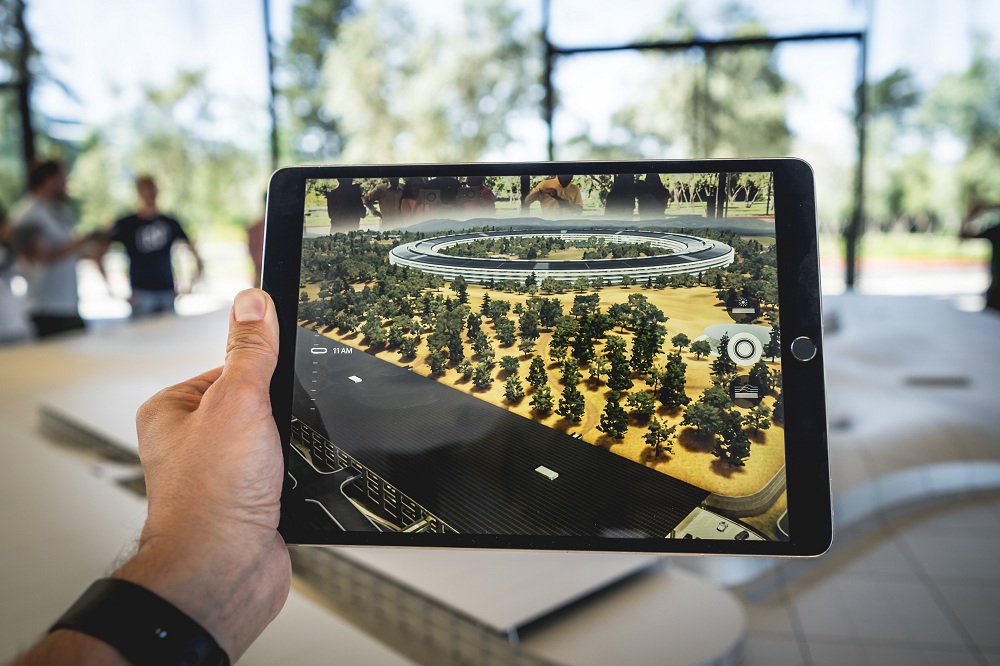The history of AR gets back to 1968 (yes, augmented reality is that old!) when Ivan Sutherland designed his Sword of Damocles. Yet, the popularity of AR got to the businesses around the world when Nokia launched its tennis app in the 2000s. In 2008, BMW became the first company who began using AR for commercial purposes and since 2016 the concept has become mainstream after the extremely successful launch of the Pokemon Go game. While it took the augmented reality more than 50 years to become popular and find its way into the market, many young businesses still question the reasonability of using AR for their niche.
Money question
Well, it’s not a secret that AR is not cheap. The starting cost for an AR-enhanced app is about $50,000 which is a lot for a small and medium-sized business that is only building its way up the market ladder. Such an expense is absolutely irrational for a small company. It is much more beneficial for small and medium businesses to invest such big money into digital marketing or basic app development rather than playing big with the augmented reality.
Yet, since you are reading this article you must have the means and the desire to implement this top-notch technology of the present and the future into your business and tightly intertwine it with your brand and business image. The question yet remains: is it worth it?

Investment rationale
Let’s talk numbers first. AR is expected to hit $90 billion in revenue in the next three years according to Digi Capital. Thrive Analytics calculated that 32% of all consumers in the world are already using augmented reality while 73% of mobile AR users report great satisfaction from the experience. BRP Consulting calculated that about half of current customers would be more likely to shop with a retailer who uses AR in its apps. Yes, the numbers might seem to be selected one-sided here but the general trend of capital investment into AR in the world and the number of emerging apps that implement the technology to prove the point. So in the long-term perspective and from the potential ROI of augmented reality, this is yet another “pro” for the technology.
Customer attraction and engagement
Any new technology instantly grabs the attention of customers and hence draws them over to your company and brand not allowing to spruce their attention elsewhere. The possibility to see how a sofa looks like in the current interior or how a particular jacket suits one’s eyes are one of the best ways to draw the attention of your potential customers. Both of these tricks have already been used by The Home Depot and Timberland or IOT. So if you consider the implementation of an AR technology into your marketing campaign, think over the ideas carefully.
AR allows brands to develop the attitude of modernity and up-to-dateness henceforth building a strong association of quality and greatness. Such an association makes the potential and current customers discuss a brand more and so engage in the brand’s philosophy at the same time sharing it with the family and friends. In most cases, people end up buying something they did not even plan to and this is exactly what you should aim for!
Multi-channel purchasing experience
More and more people turn to the online purchasing experience because it usually happens faster and easier. However, there still adherers of the brick-and-mortar shopping who detest online shopping because there is no possibility to touch a product, to try it on, and to imagine it in their daily life. Augmented reality introduced the philosophy of ‘try before you buy’ to online sales and, in fact, became the interlink for the two experiences together, hence increasing the number of converting viewers into buyers.
AR saves people from the pitiful feeling of regret that comes when an armchair does not fit into the living room or when a perfect coat is a bad fit for the rest of the wardrobe. AR ultimately makes the customers happier and therefore more loyal to your brand. The statistics from Shopify suggests that 61% of consumers are more happy to attend the brand’s store and so make a purchase if it offers AR experiences while 40% of them will be willing to pay more for the same product if it can be “tried on” with AR.

Accessible of any information
82% of mobile device users research a product before buying it. And the research is happening online which means that people take their time to surf the Web for reviews, product characteristics, and any other useful information. Augmented reality allows giving all this information to your buyers here and now. One of the greatest examples of this application of AR is Blippar app. Whenever a camera is focused on a product, the app gives extensive information about it: its description, price, reviews, etc. In this way, instead of spending 5-15 minutes on research, the buyers can get instant access to all possible information about a given product. The estimated revenue of this app is about $12 million. Impressive, right?
If Content is the king of online marketing, then make it your own leader with the help of augmented reality. Make content about your products attractive, interactive, compelling, and memorable.
And the final words. Amazon, Sephora, L’Oreal, Shazam, Timberland, Lacoste, Converse, The Home Depot, IKEA, Tesco, Messenger, Instagram, MTV, New York Times, are all well-known companies all over the world. Their enormous marketing teams are always on top of the world’s trends and in particular cases, they actually develop the trends. So if all of these business sharks are already hectically implementing AR into their usual sales processes, apps, and websites, then what do you think: do you need an augmented reality for your brand?


